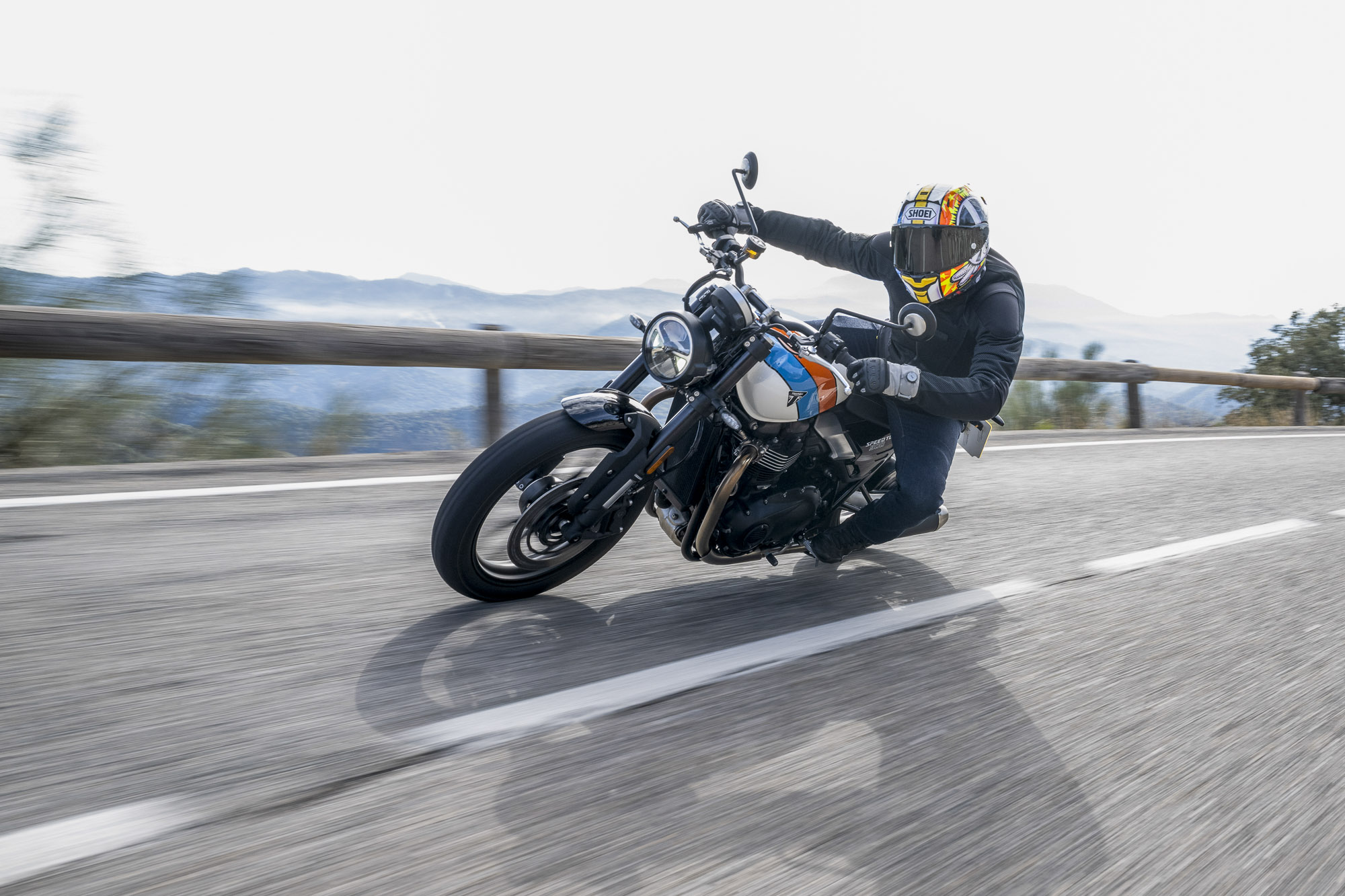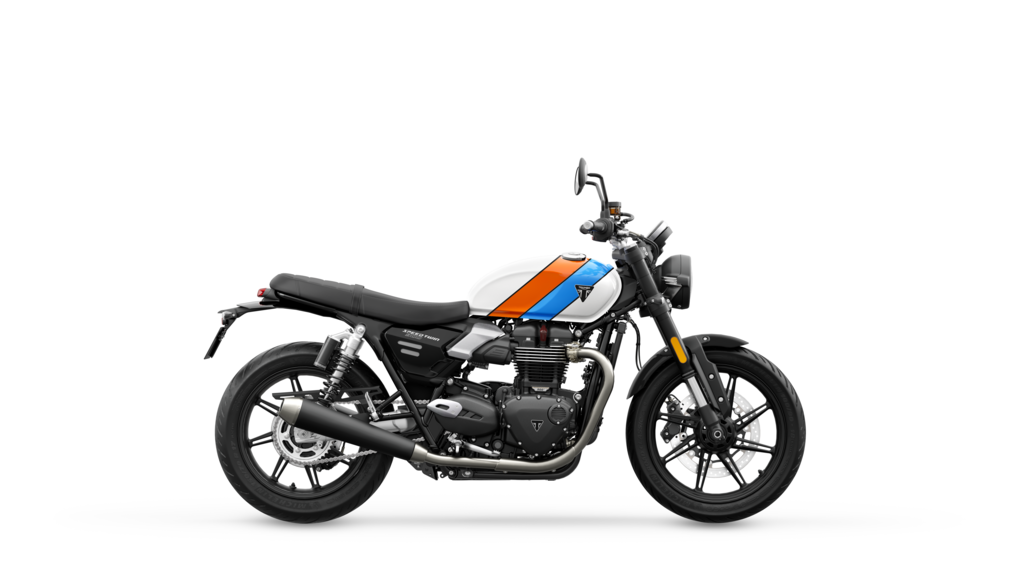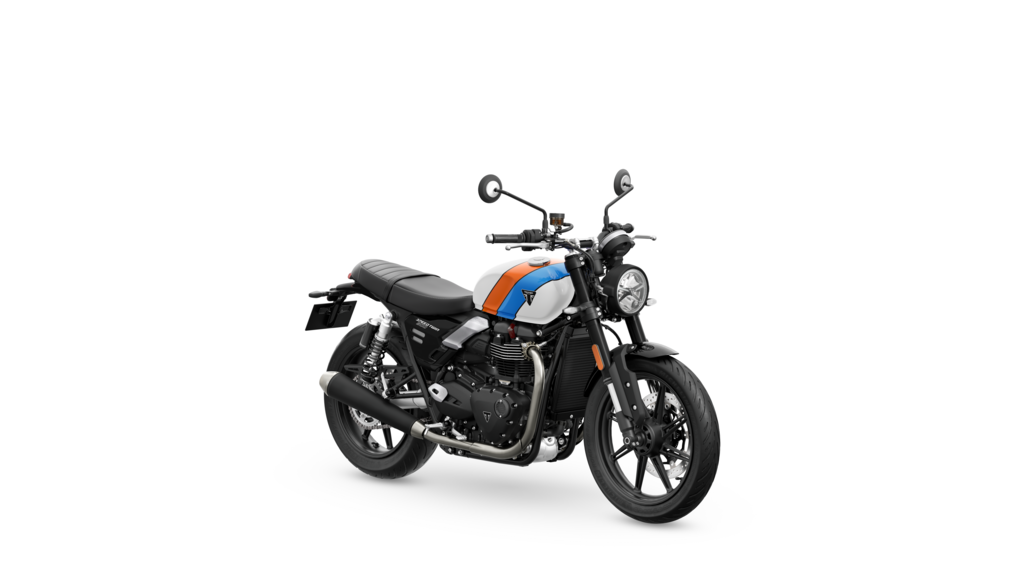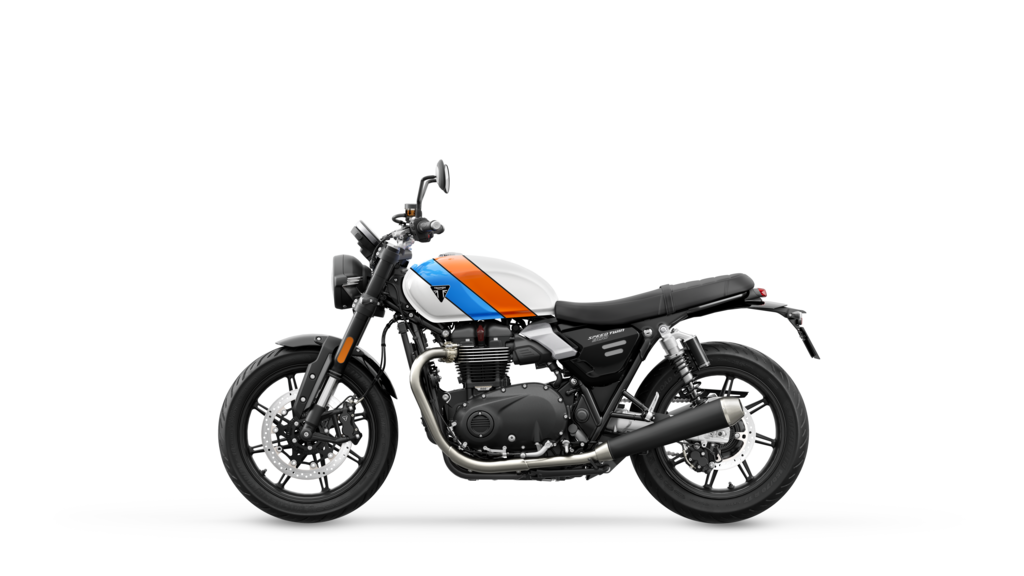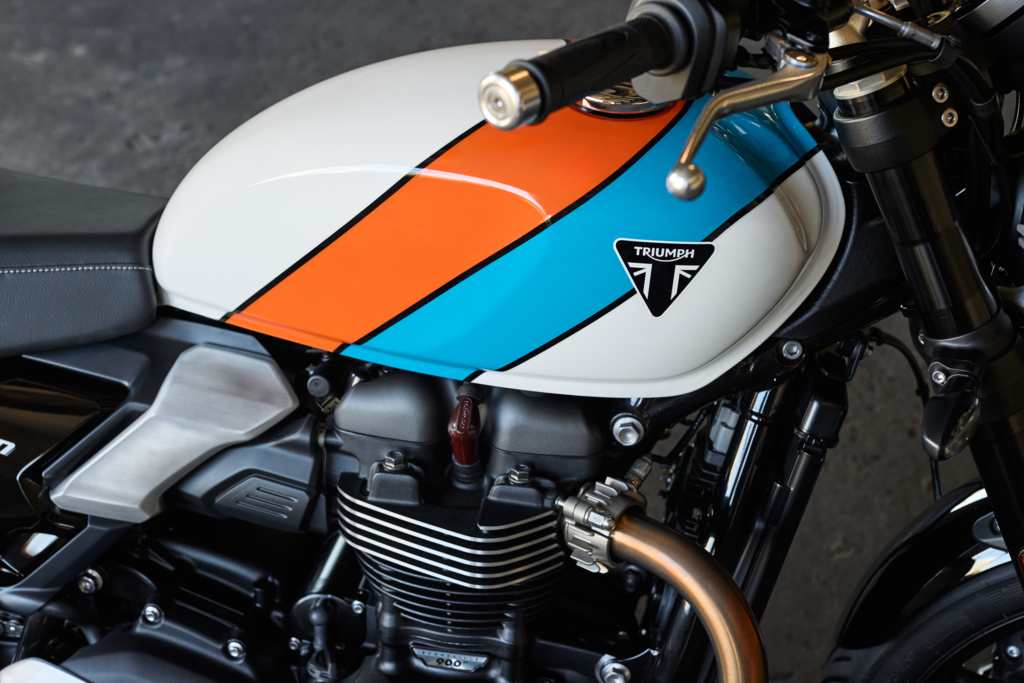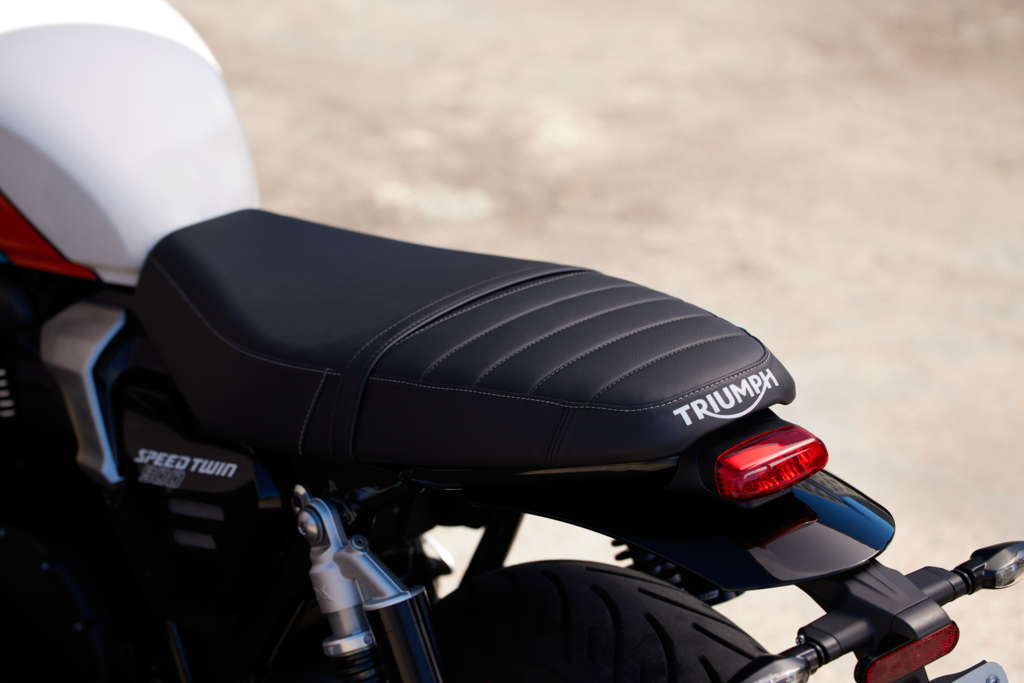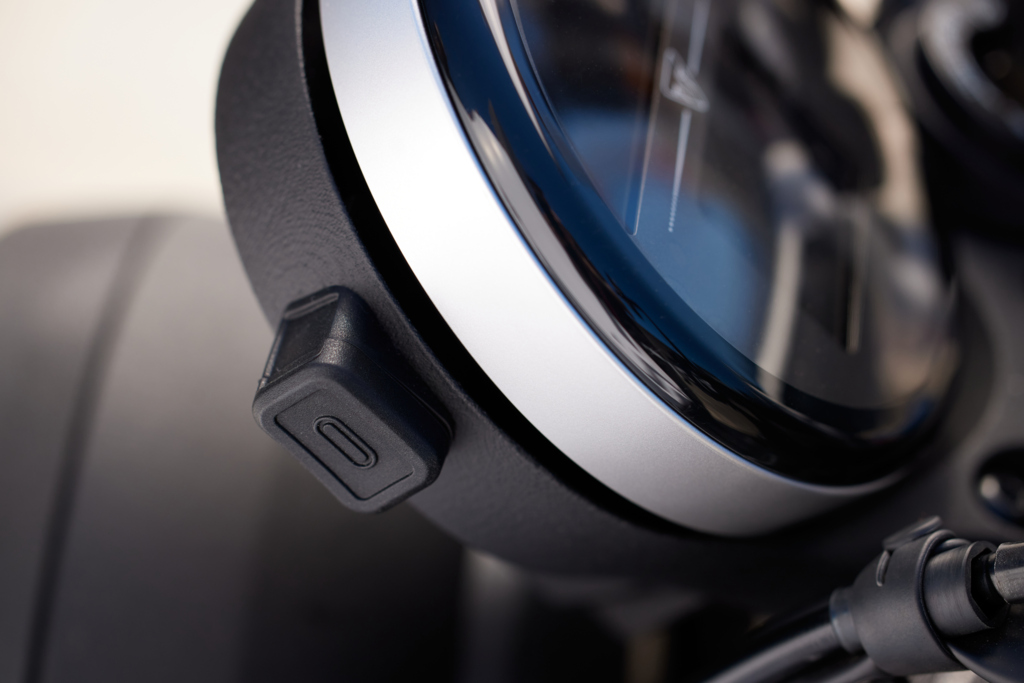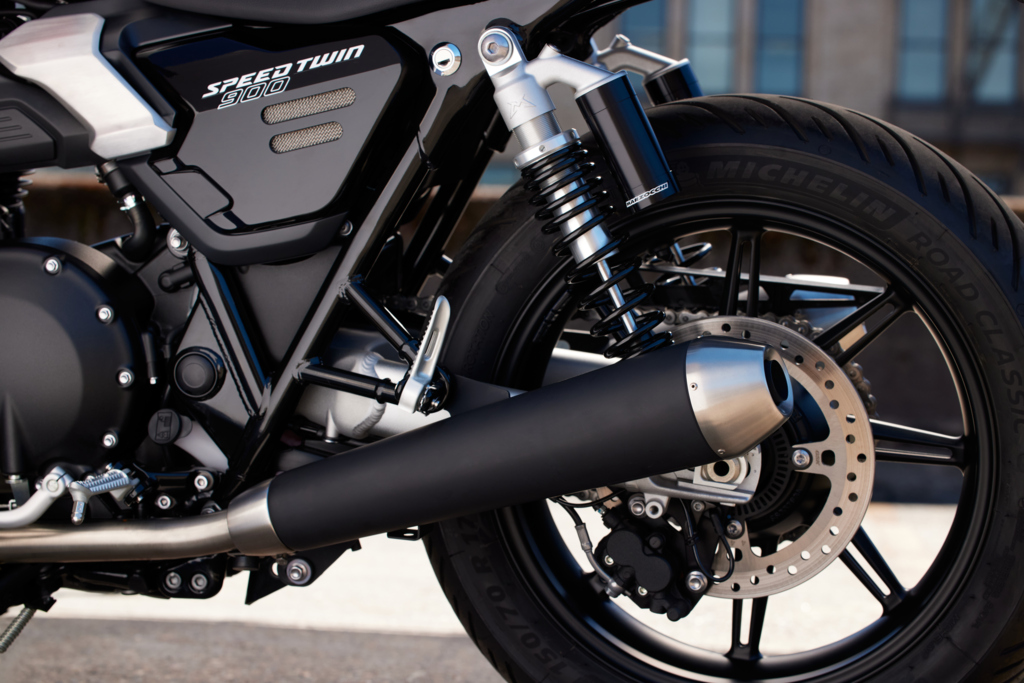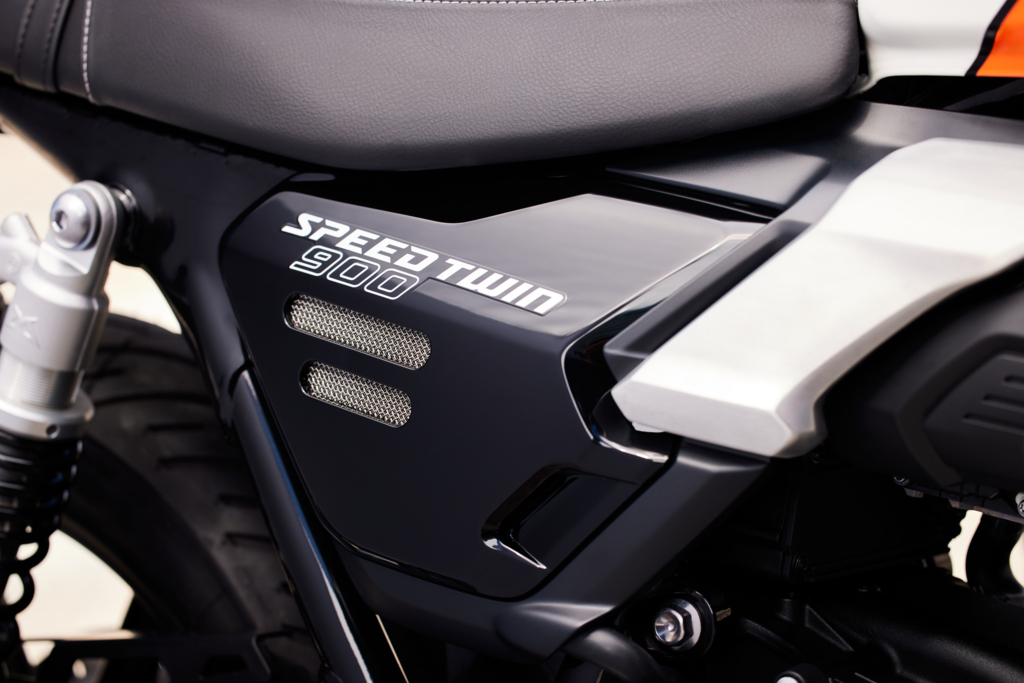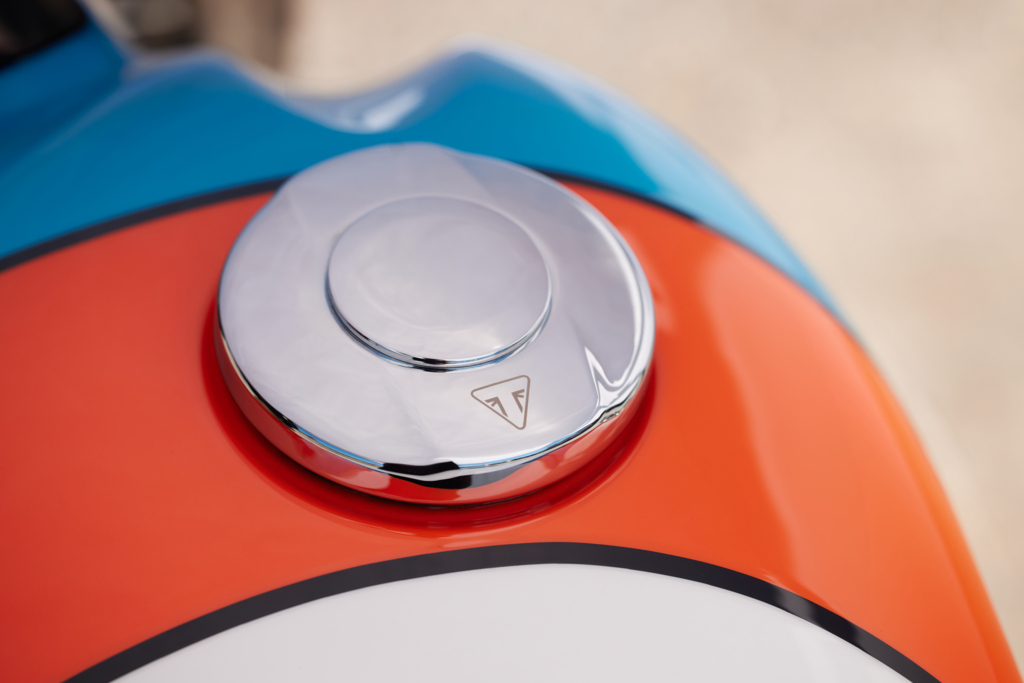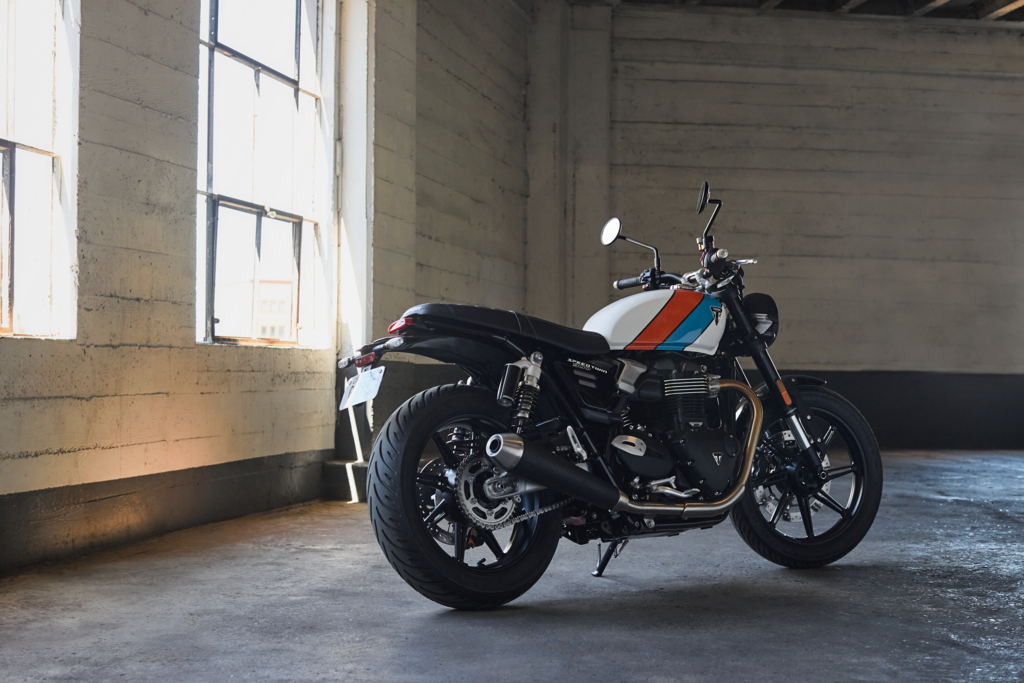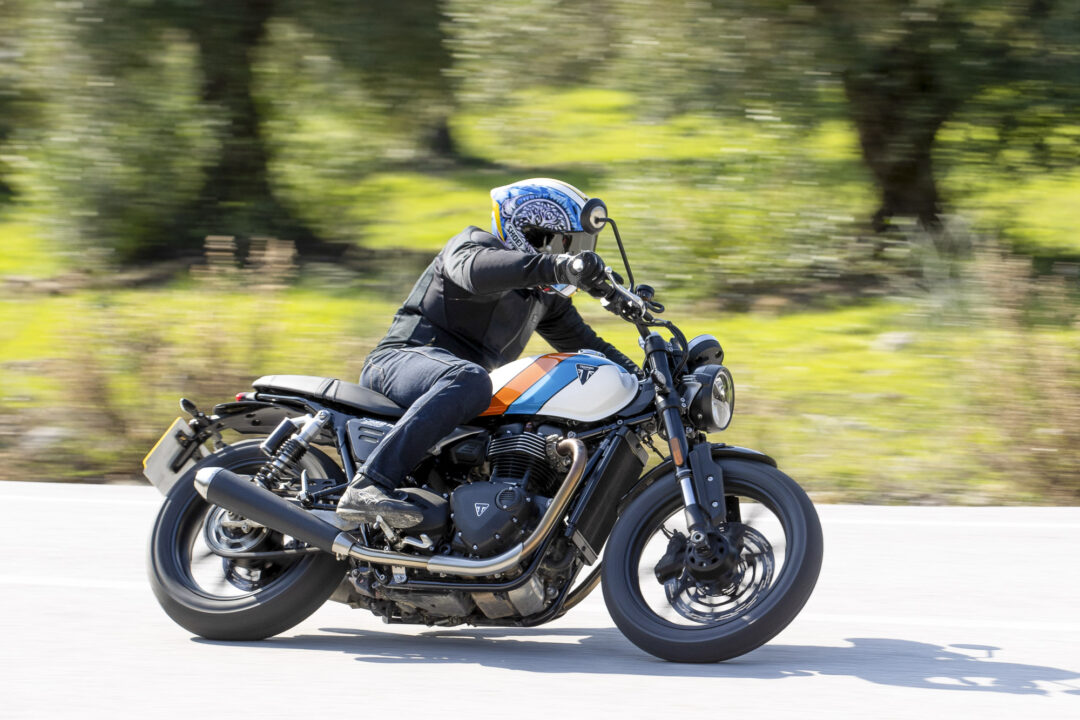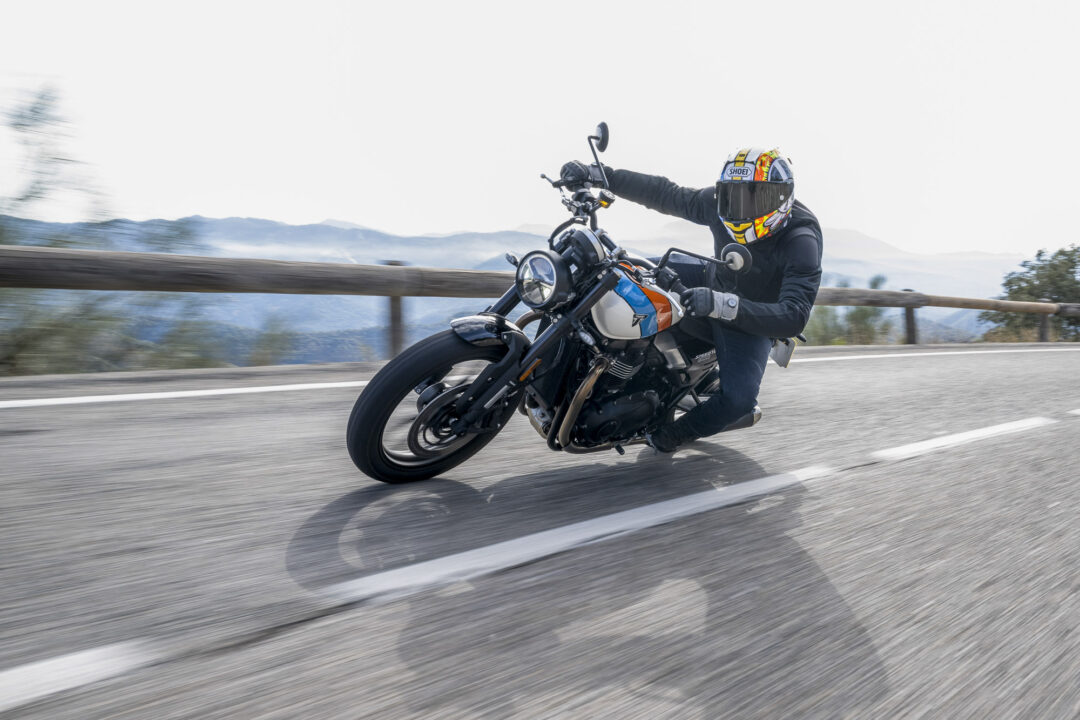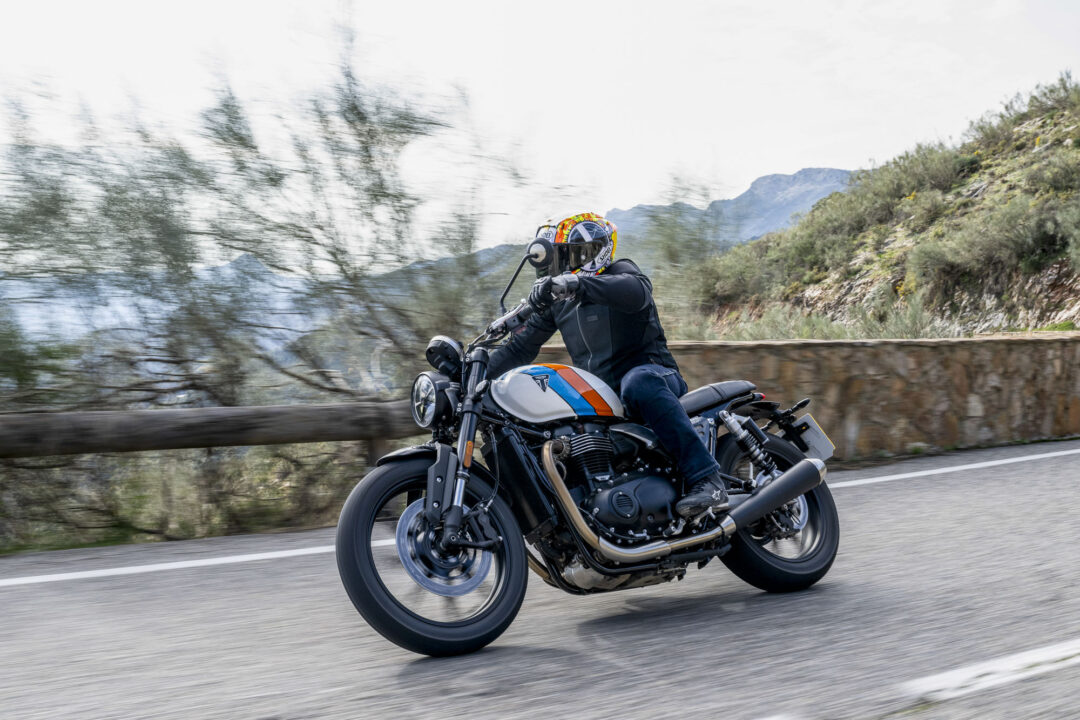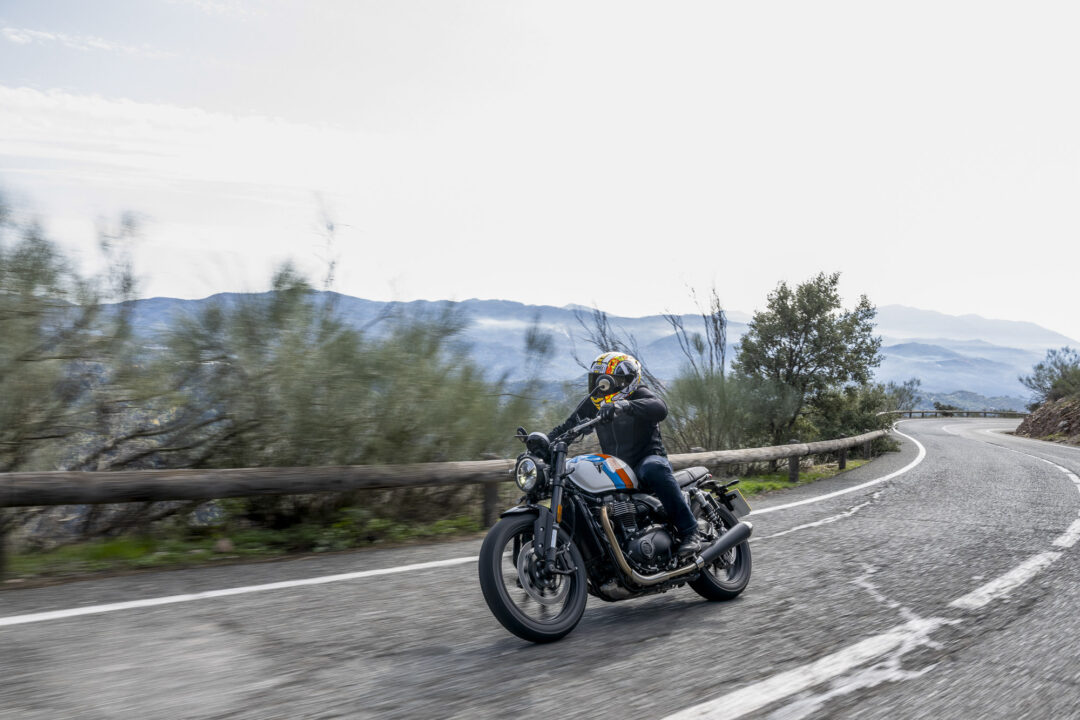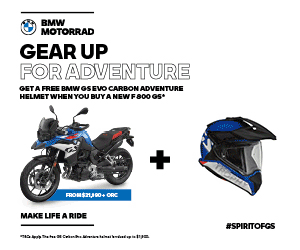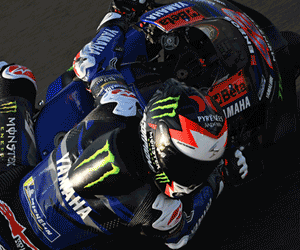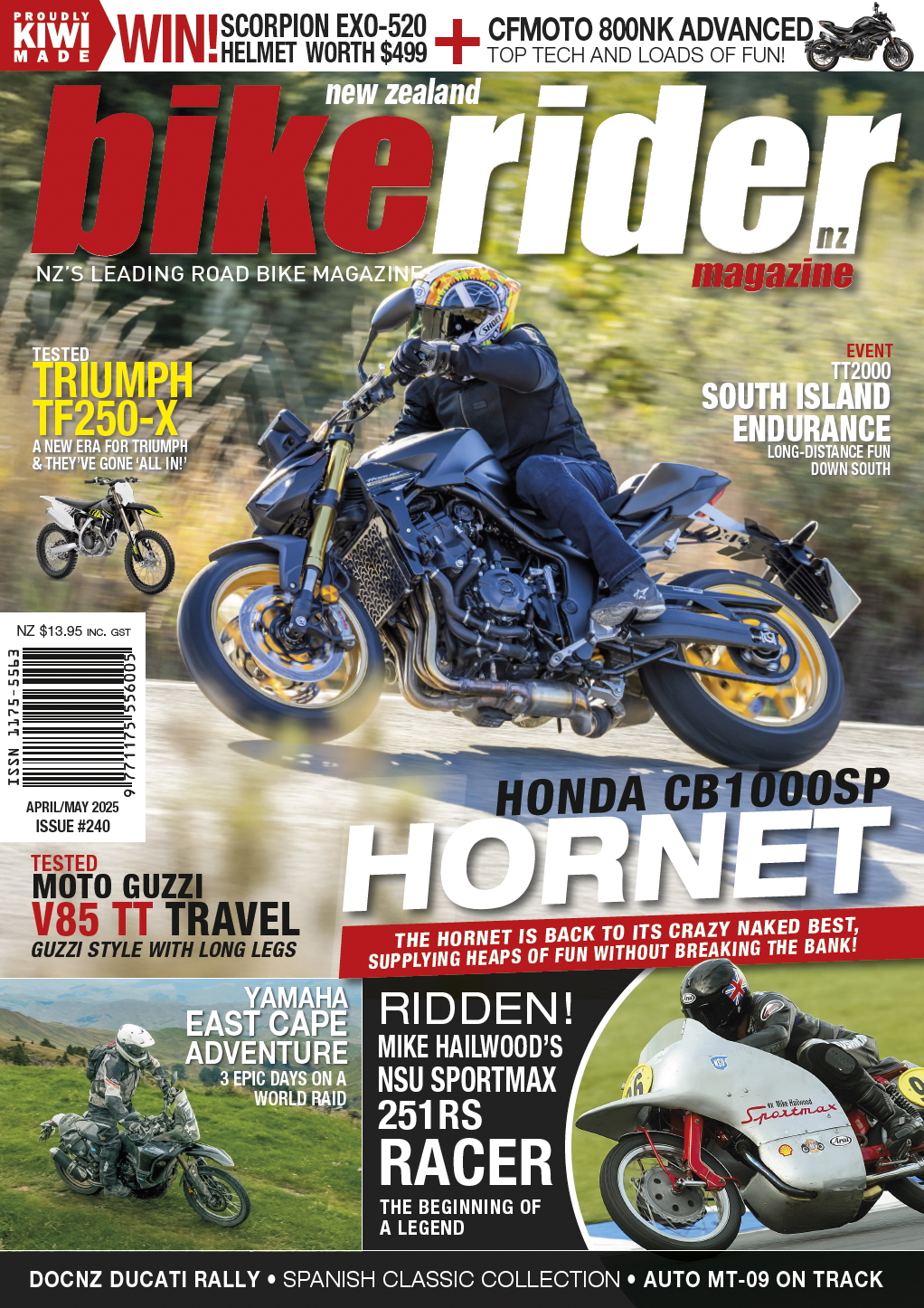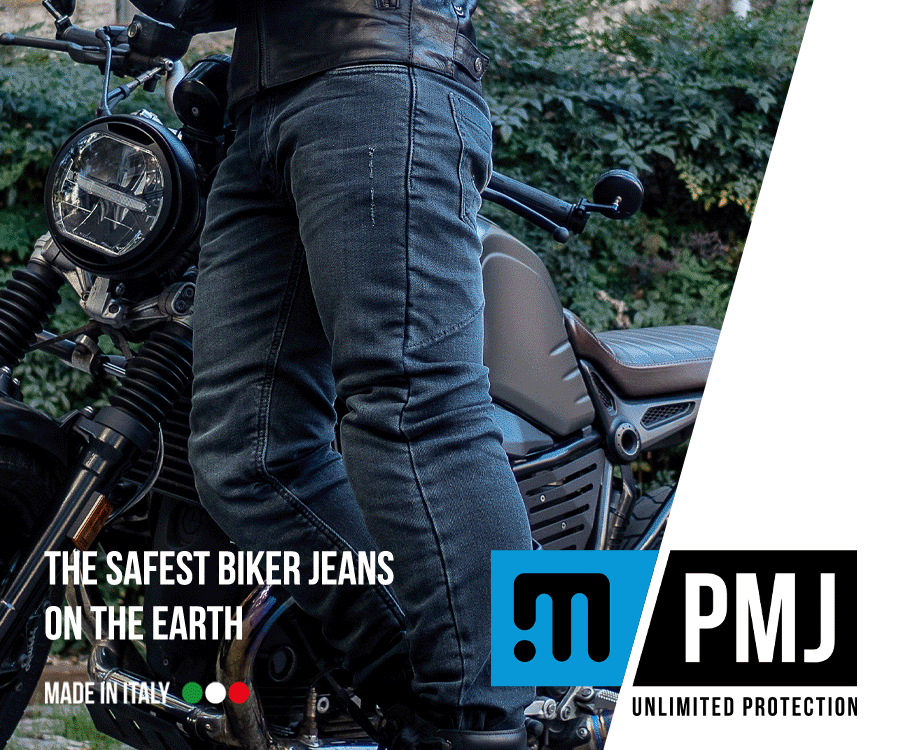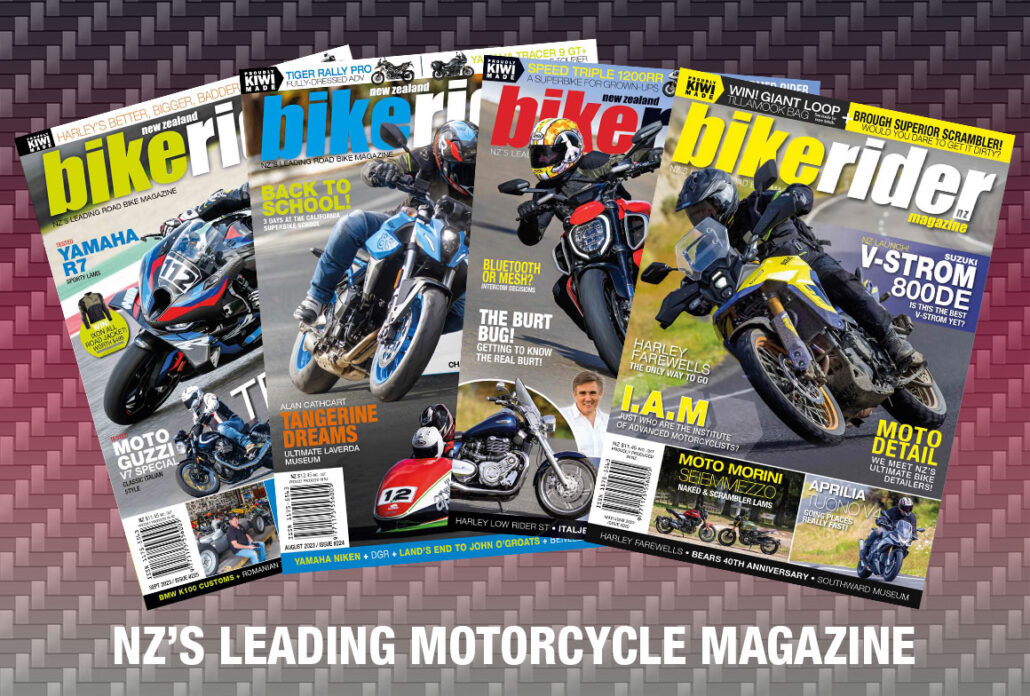- 43mm upside-down Marzocchi forks
- Aluminium swingarm with piggyback RSUs
- Optimised cornering ABS and traction control
Triumph continues to improve its modern classic range with the new Speed Twin 900.
While the new and distinctly sporty Speed Twin 1200 RS is grabbing all the headlines, it is Triumph’s cheaper and more understated modern classic, the Speed Twin 900, that is likely to grab the lion’s share of the Hinckley factory’s sales. For 2025, this sweetly proportioned Brit retro, formally known as the Street Twin, is better-equipped courtesy of an electronics upgrade, gets a tweak to its classic styling and is itself a little sportier in nature.
While the familiar liquid-cooled Bonneville parallel twin, complete with machined air-cooled-look finning, is now Euro 5+ compliant but otherwise unchanged, the chassis gets a major revamp. The handling is sportier than before thanks to beefier upside-down front Marzocchi forks, new Marzocchi twin shocks, lighter wheels (18-inch diameter front, 17-inch rear), Michelin Road Classic tyres and a larger 320mm diameter disc and new radial four-piston brake caliper. A new swingarm is lighter, and the wheelbase has been chopped by 15mm.
The riding position is roomier, with the bars now mounted 15mm higher and 3.5mm further forward, the pegs set 6.5mm lower, and the seat raised by 15mm. A new display, with full Bluetooth connectivity available as an option, replaces the twin analogue clocks, allowing you to play with the two riding modes (Road and Rain) and make full use of the new lean-sensitive rider aids, which, along with an IMU, are newly introduced for 2025.
There are three striking new colours, plus a new fuel tank, a brushed aluminium flip-up filler cap, revised side panels and throttle body covers, minimalist mudguards, new fork protectors, bench seat, footpegs, heelguards, LED lights… The list goes on.
We headed to southern Spain for a long day in the saddle to find out if the new Speed Twin goes as well as it looks.
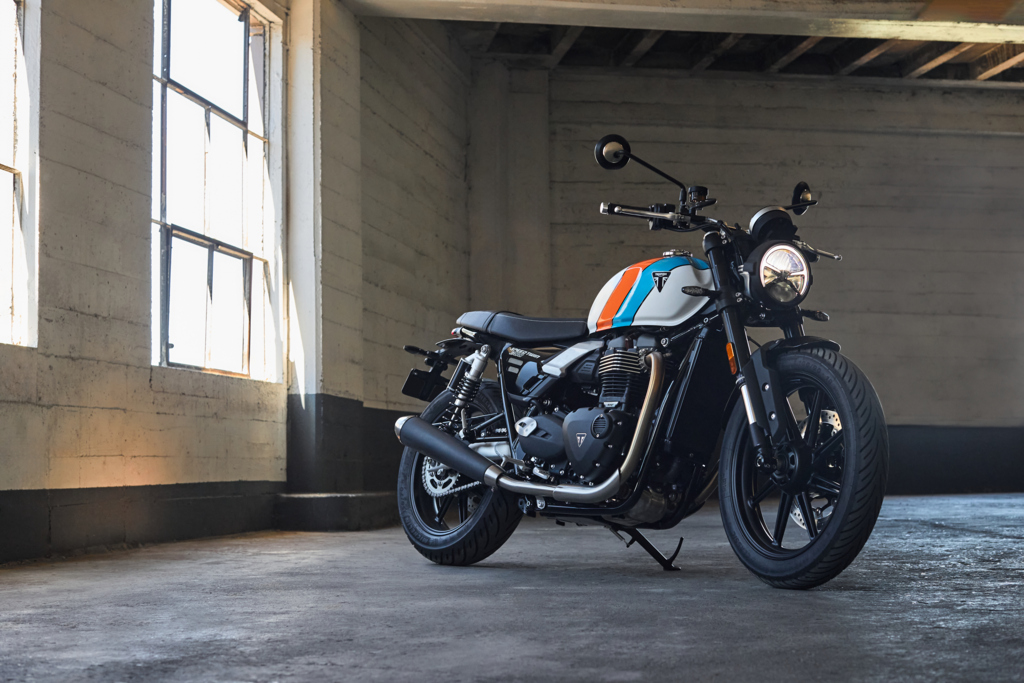
Triumph continues to hit the mark with its ever-expanding range of modern classics, which starts with the entry-level Speed 400 and climaxes with the recently introduced Speed Twin 1200. Stir in existing models such as the Bonneville, Scrambler and Bobber – in all their various formats – and those seeking a modern Brit retro with genuine links to the past are spoilt for choice.
With striking new colours and considered design tweaks, the middleweight 900 is more tempting than ever, especially to new and younger riders. Traditionalists may not approve of the new pure-white finish with blue and orange stripes – but in the flesh, it looks stunning. And those who remember when Triumphs had kick-starts may be equally perturbed by the new single round digital dash, but there’s no arguing that Triumph’s designers have been putting in plenty of overtime.
Both the detailing and overall effect are excellent. Twin exhausts look perfectly retro and cleverly hide the Euro5+ catalytic converter. The parallel twin is water-cooled, of course, but eyes are cleverly drawn to the cylinders’ evocative finning rather than the ugly radiator. I love the finned header clamps and other small touches which make the bike appear authentically old-school while also embracing the new.
On board, the retro feeling is slightly diluted by that new TFT display, but the dash is easy to navigate and not overly complicated like some. There are two riding modes, Road and Rain, with different throttle responses, along with all-new lean-sensitive ABS and traction control. This can be switched off, but ABS is always on.
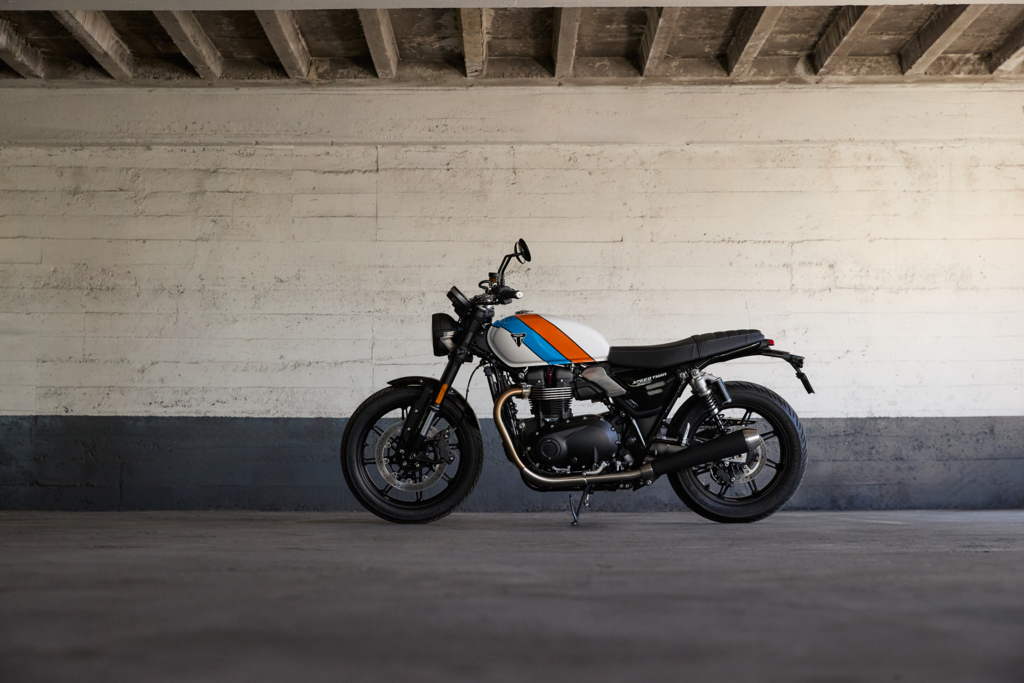
“The Speed Twin produces the same peak torque as Triumph’s rampant Street Triple 765 sports naked and does so lower in the rpm, lending serious drive to the lower revs…”
A new subframe and bench seat have allowed Triumph to increase the seat height over the previous model to a still-reasonable 780mm. They have done this to improve comfort by also lowering the pegs and moving the bars higher and slightly further forward. As a short rider, I had no problems getting two feet securely on the ground. The seat is relatively narrow at the fuel tank, which allows easy access for all leg lengths.
Right from the off, the Speed Twin 900 is forgiving and easy to manage for a bike which tops the scales at 216kg with fuel. Peak power remains at a quoted 64bhp at 7500rpm while peak torque is 80Nm / 59 ft-lb at a very accessible 3800rpm. Useful, satisfying torque floods the lower revs and midrange; in the default Road mode it is so easy to ride that it’s hard to imagine when the softer Wet mode would ever be needed. At slow speed the 900 is a doddle to ride in traffic and ideal for new or relatively inexperienced riders. The five-speed gearbox is light enough and, although there is no quickshifter as an option, commuting on this bubbly and agile Triumph would be an easy undertaking.
Like the almost redundant Wet mode, you could argue that lean-sensitive rider aids aren’t really needed on a 64bhp modern classic either. For those who remember when Evel Knievel jumped buses on a Triumph, then possibly not, but younger riders growing up with lean-sensitive ABS and traction control might disagree. We had mixed conditions in southern Spain, and overnight rain meant corners in shadow or under trees remained treacherously damp – and this rider of 30-or-so years was thankful for the cornering ABS…
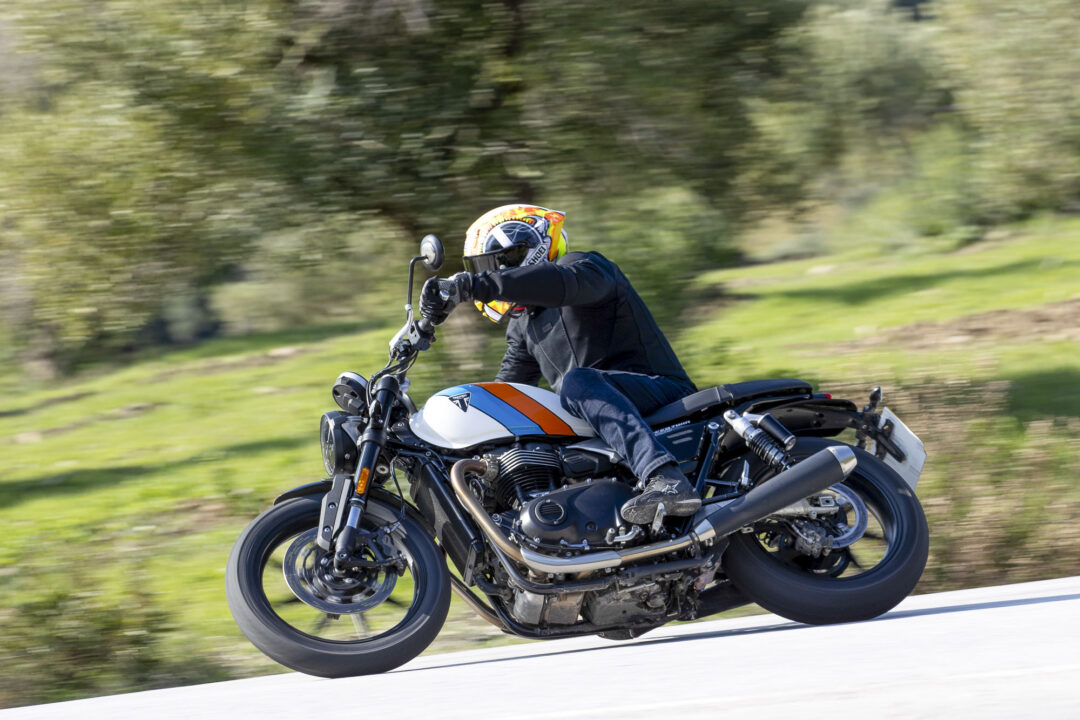
While 64bhp might not impress your mates down the pub, 80Nm at just 3800 rpm is a hatful of torque. In fact, the Speed Twin produces the same peak torque as Triumph’s rampant Street Triple 765 sports naked and does so lower in the rpm, lending serious drive to the lower revs and another good reason to have lean-sensitive TC onboard. In the dry I managed to get the TC to kick in simply by opening the throttle hard as the tyres ran over polished white lines (and the intervention was reassuringly smooth).
Triumph has tweaked the chassis to give it a sportier edge, with wheels that are 100g lighter than before and a swingarm that saves 1.5kg over the outgoing model, along with a shorter wheelbase. The new bike weighs the same overall as the outgoing Twin because the new electronics, brakes and larger-diameter forks all add kilos, but the savings are in the crucial areas of unsprung and semi-unsprung weight. Meanwhile, the suspension is all new, with slightly less travel, and the new 900 feels noticeably sportier than before.
By mid-morning the temperature had risen and so had the pace of the ride – and the new Speed Twin is rewarding and enjoyable to pilot quickly and smoothly. It’s not pin sharp, as you’d expect, and rolls over its 18-inch front wheel rather than turn quickly to the apex, but it’s smooth, stable and easy going. If Triumph wanted to make the Speed Twin turn faster, a 17-inch front rim would be the obvious move, but that wouldn’t match the bike’s retro style. Besides, if you are after a modern classic that you can take to the track, the Speed Twin 1200 RS is a serious option.
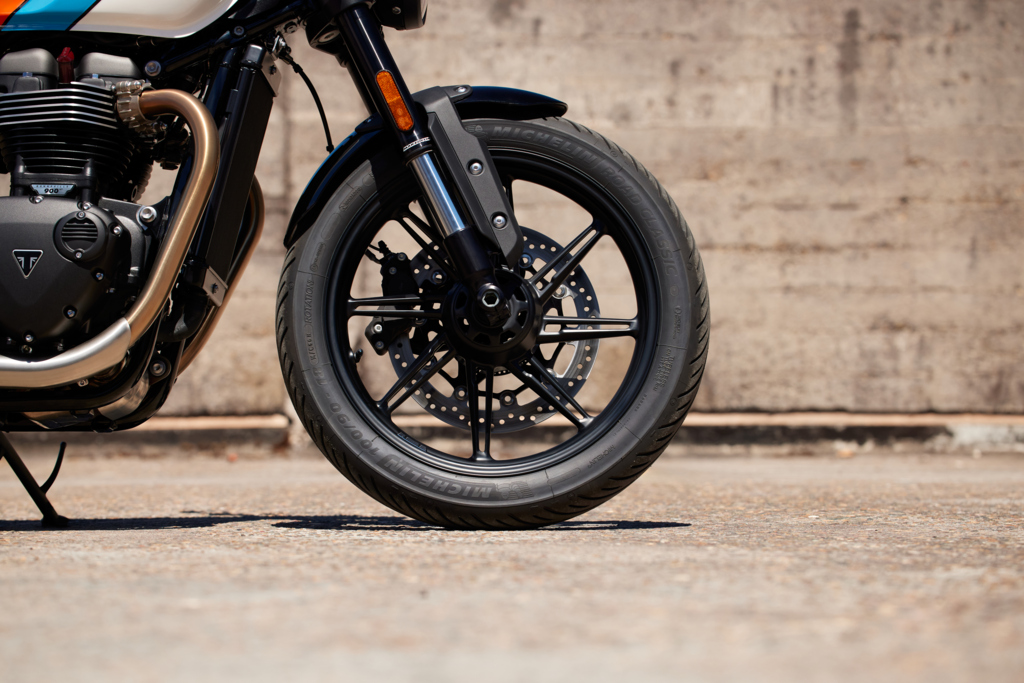
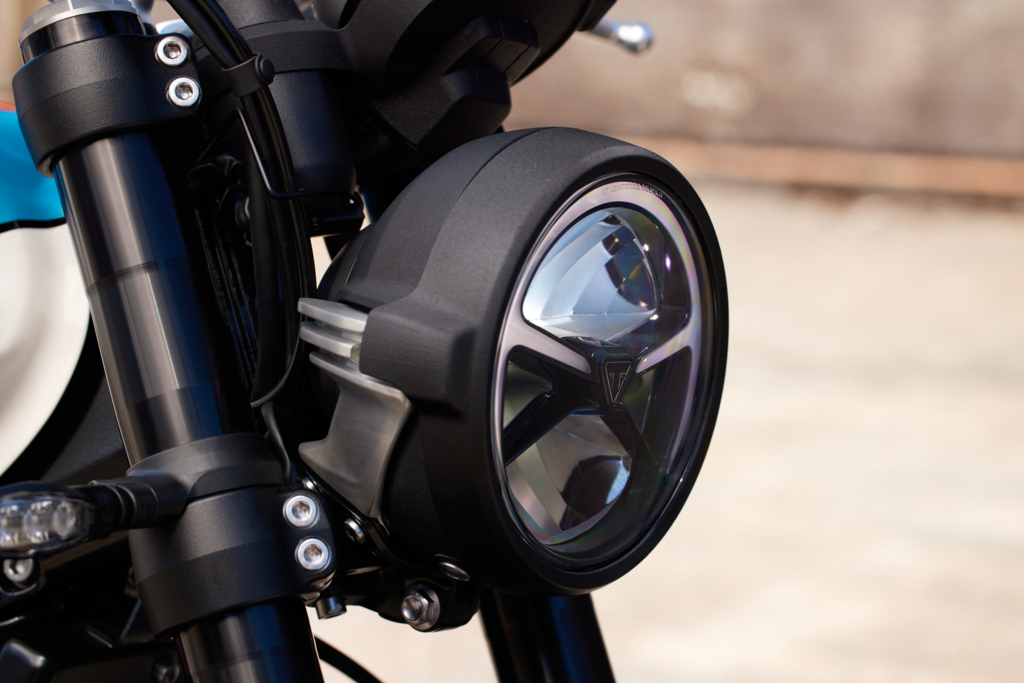
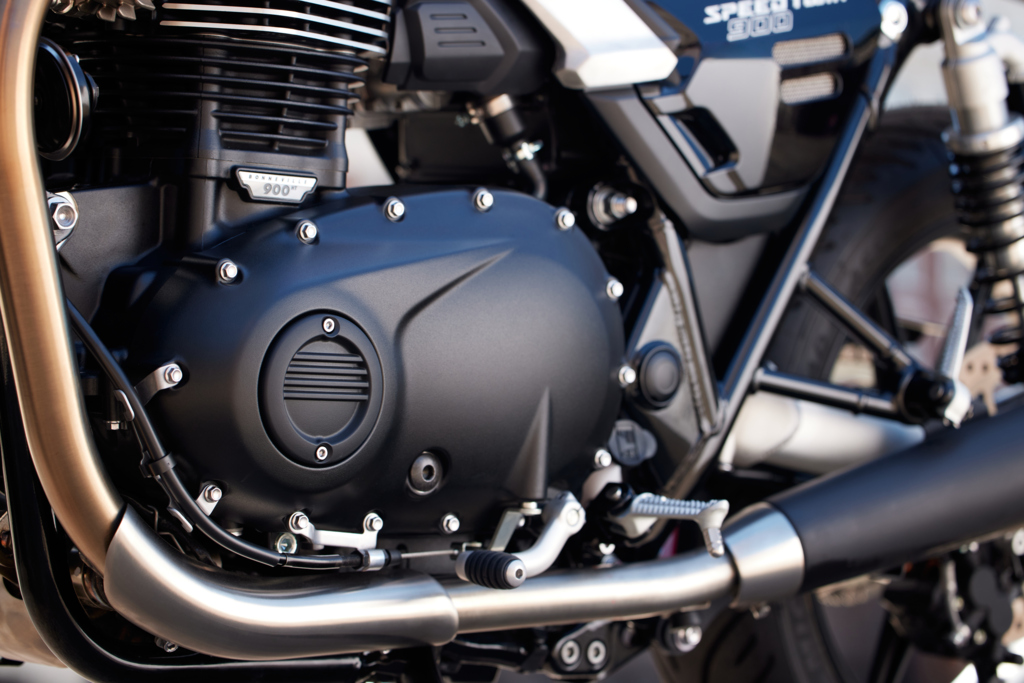
“According to Triumph, Speed Twin 900 owners loved the engine – so leave that alone, please – but wanted a sportier edge with improved rider aids and a cooler new, but still retro, image. And that is what has been delivered.”
Despite the relaxed nature of the new 900, you can still have fun. On paper, the single disc brake isn’t a massive step up from the previous model, but it feels much stronger than before. The Marzocchi suspension is relatively basic, with no adjustment on the front and spring preload only on the rear, but it controls the chassis well up to peg scraping angle of lean (and ground clearance is good for a bike in this class). When the pegs do start to tickle the road, that is a good indication to back off a little as you’re getting close to the limits of the new Michelin rubber. Likewise, throw in a few big undulations when you are pressing on and the softly damped and sprung rear shocks threaten to bottom out.
Away from all this sporty riding, the Speed Twin promises to be as competent as ever. Perhaps rather surprisingly, Triumph has stuck with the five-speed gearbox rather than updating to a six-speed transmission, but although we didn’t get the opportunity to ride at a high cruising speed for a prolonged period, top gear does seem tall enough to keep rpm reasonably low at motorway speeds. The majority of the test was spent carving up mountain passes or hugging the coast and just enjoying the ride. Peak torque arrives just below 4000rpm, and even if you held a gun to my head and asked at what revs the redline is, I wouldn’t know. For 90 per cent of the 155km route, my bike’s tacho was firmly buried in that fat and fruity mid-range. Maybe two or three times, I asked for a few more rpm for an uphill overtake, but that was rare. When you do get an excuse to let the engine breath, it’s nice to discover Triumph has managed to inject some bark into the new exhaust, which adds a smile to the ride, too.
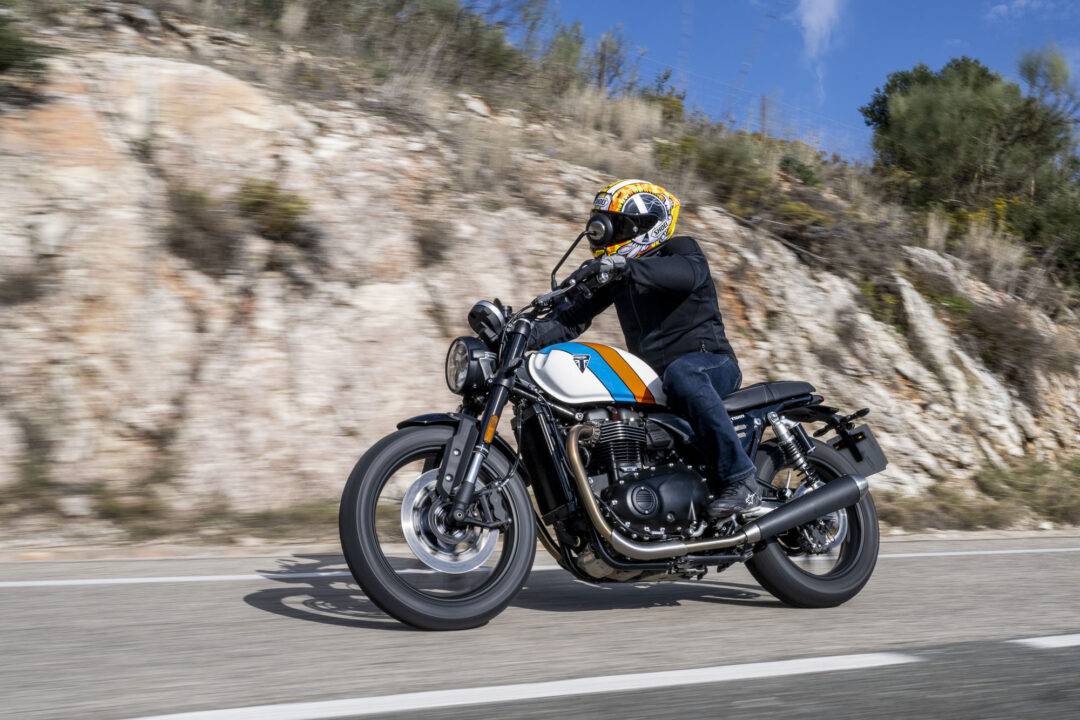
Verdict
Triumph appears to have listened to customer feedback. According to Triumph, Speed Twin 900 owners loved the engine – so leave that alone, please – but wanted a sportier edge with improved rider aids and a cooler new, but still retro, image. And that is what has been delivered.
The handling isn’t vastly different, but there is a fresh edge to the way the 2025 machine turns and stops. The digital dash may be controversial in some quarters, but new lean-sensitive rider aids tick the tech box and make the 900 even more accommodating for new riders. In terms of styling, detailing and quality of finish, the new bike is hard to fault and punches well above its just-under $17,990 price point.
The true test will be when it comes up against the competition, particularly the pricier and more powerful Ducati Scrambler and Moto Guzzi V7, which gets an upgrade for 2025. But as first impressions go, the new Speed Twin 900 certainly hits the mark and is more desirable than ever. It looks like the Triumph’s most popular modern classic will continue to shine.
SPECIFICATIONS
New price From $17,990
Capacity 900cc
Bore x Stroke 84.6mm x 80mm
Engine layout Parallel Twin
Engine details Water-cooled, 4v per cylinder. SOHC 270 degree crank
Power 47.8Kw / 64bhp @7500rpm
Torque 80Nm/ 59lb-ft 3,800 rpm
Transmission 5 speed – chain drive
Average fuel consumption 4.0l/100km (tested)
Tank size 12 litres
Rider aids Lean sensitive TC and ABS, plus two rider modes, Road /
Rain.
Frame Tubular steel, with steel cradles
Front suspension Marzocchi 43mm inverted fork, 120mm travel, none adjustable.
Rear suspension Twin Marzocchi RSU; 116mm travel. Preload only
Front brake Radial-mount 4-piston calipers, single 320mm discs w/ cornering ABS.
Rear brake Nissin single-piston floating caliper, 255mm disc w/ cornering ABS
Front wheel / tyre 100/90×18 Michelin Road Classic
Rear wheel / tyre 150/70-17 Michelin Road Classic
Wheelbase 1435mm
Seat height 780mm
Weight 216kg (wet)
Warranty 2-Years
Service 16,000km or 12 months
Website www.triumphmotorcycles.co.nz

